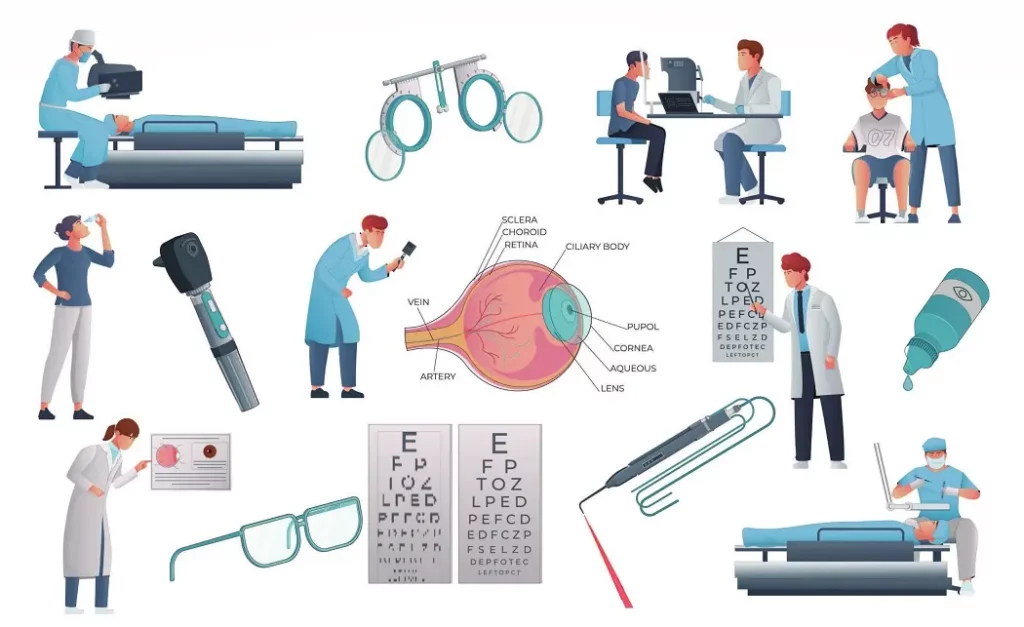All Categories
Featured
Low vision, a condition where typical glasses, contact lenses, or surgical treatment can not completely bring back sight, can make day-to-day tasks challenging. Reduced vision recovery uses a variety of resources to help people maintain their independence and top quality of life. This post checks out the alternatives available for those seeking assistance in handling their aesthetic problems.
What Is Reduced Vision Rehab?
Reduced vision rehabilitation is a structured approach to assist individuals optimize their remaining vision and adapt to brand-new means of executing everyday tasks. Professionals deal with individuals to create customized approaches, including devices, techniques, and training programs that fit their distinct demands.
![]()
Trick Options for Reduced Vision Rehab
Vision Enhancing Instruments
Optical Aids: Instruments like magnifiers, telescopic glasses, and special reading lenses can enhance clearness for analysis, writing, and other close-up activities.
Digital Visual Aids: Devices such as electronic magnifiers and portable video magnifiers provide flexible zoom abilities for numerous tasks.
Wearable Technology: Smart glasses geared up with cams and voice comments deal cutting-edge solutions for improving vision.
![]()
Assistive Technology
Display readers, text-to-speech applications, and gadgets with voice commands make innovation easily accessible for people with low vision.
Mobile phone applications, such as navigating help and object acknowledgment tools, help individuals interact with their surroundings better.
Training and Therapy
Alignment and Wheelchair Training: Experts instruct skills for navigating rooms securely, including the use of white walking sticks or guide dogs.
Daily Living Skills Training: Recovery programs give techniques for food preparation, cleansing, and personal care, guaranteeing that people can carry out necessary jobs independently.
Aesthetic Abilities Educating: Workouts designed to enhance making use of remaining peripheral vision can boost aesthetic performance.
Environmental Adaptations
Adjustments to living or work spaces can substantially improve ease of access. Instances include:
Setting up brighter lighting.
Adding high-contrast markings to devices.
Arranging furniture to create clear pathways.
Support Networks
Psychological and mental assistance is a crucial part of rehab. Support system, therapy sessions, and counseling solutions can aid people deal with the obstacles of vision loss.
![]()
Peer networks connect individuals with comparable experiences, fostering a sense of area and shared understanding.
Exactly How to Accessibility Low Vision Recovery Services
Low vision recovery services are typically supplied by:
Reduced Vision Clinics: Run by eye doctors and eye doctors concentrating on vision disabilities.
Occupational Specialists: Specialists in adjusting jobs and atmospheres to fit private requirements.
Not-for-profit Organizations: Teams such as the American Foundation for the Blind (AFB) or regional blindness assistance companies use valuable resources and referrals.
Verdict
Reduced vision rehabilitation offers a variety of sources tailored to enhance functionality, boost confidence, and improve high quality of life. If you or a liked one is dealing with the obstacles of reduced vision, think about reaching out to an expert or rehab center to explore the several choices readily available.
What Is Reduced Vision Rehab?
Reduced vision rehabilitation is a structured approach to assist individuals optimize their remaining vision and adapt to brand-new means of executing everyday tasks. Professionals deal with individuals to create customized approaches, including devices, techniques, and training programs that fit their distinct demands.

Trick Options for Reduced Vision Rehab
Vision Enhancing Instruments
Optical Aids: Instruments like magnifiers, telescopic glasses, and special reading lenses can enhance clearness for analysis, writing, and other close-up activities.
Digital Visual Aids: Devices such as electronic magnifiers and portable video magnifiers provide flexible zoom abilities for numerous tasks.
Wearable Technology: Smart glasses geared up with cams and voice comments deal cutting-edge solutions for improving vision.

Assistive Technology
Display readers, text-to-speech applications, and gadgets with voice commands make innovation easily accessible for people with low vision.
Mobile phone applications, such as navigating help and object acknowledgment tools, help individuals interact with their surroundings better.
Training and Therapy
Alignment and Wheelchair Training: Experts instruct skills for navigating rooms securely, including the use of white walking sticks or guide dogs.
Daily Living Skills Training: Recovery programs give techniques for food preparation, cleansing, and personal care, guaranteeing that people can carry out necessary jobs independently.
Aesthetic Abilities Educating: Workouts designed to enhance making use of remaining peripheral vision can boost aesthetic performance.
Environmental Adaptations
Adjustments to living or work spaces can substantially improve ease of access. Instances include:
Setting up brighter lighting.
Adding high-contrast markings to devices.
Arranging furniture to create clear pathways.
Support Networks
Psychological and mental assistance is a crucial part of rehab. Support system, therapy sessions, and counseling solutions can aid people deal with the obstacles of vision loss.

Peer networks connect individuals with comparable experiences, fostering a sense of area and shared understanding.
Exactly How to Accessibility Low Vision Recovery Services
Low vision recovery services are typically supplied by:
Reduced Vision Clinics: Run by eye doctors and eye doctors concentrating on vision disabilities.
Occupational Specialists: Specialists in adjusting jobs and atmospheres to fit private requirements.
Not-for-profit Organizations: Teams such as the American Foundation for the Blind (AFB) or regional blindness assistance companies use valuable resources and referrals.
Verdict
Reduced vision rehabilitation offers a variety of sources tailored to enhance functionality, boost confidence, and improve high quality of life. If you or a liked one is dealing with the obstacles of reduced vision, think about reaching out to an expert or rehab center to explore the several choices readily available.
Latest Posts
Enhance Your Hyundai Ownership with Ron Marhofer Hyundai's Unique Programs
Published Apr 20, 25
1 min read
Visit Montclare Auto Repair Today - Reliable Service Guaranteed
Published Apr 20, 25
2 min read
Flexible Financing and Leasing Options at Hyundai of Akron
Published Apr 20, 25
1 min read
More
Latest Posts
Enhance Your Hyundai Ownership with Ron Marhofer Hyundai's Unique Programs
Published Apr 20, 25
1 min read
Visit Montclare Auto Repair Today - Reliable Service Guaranteed
Published Apr 20, 25
2 min read
Flexible Financing and Leasing Options at Hyundai of Akron
Published Apr 20, 25
1 min read